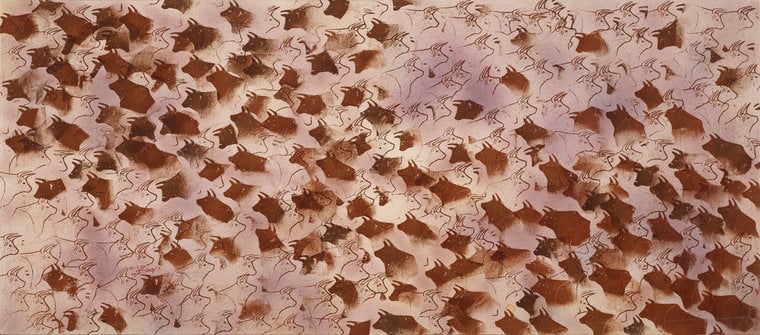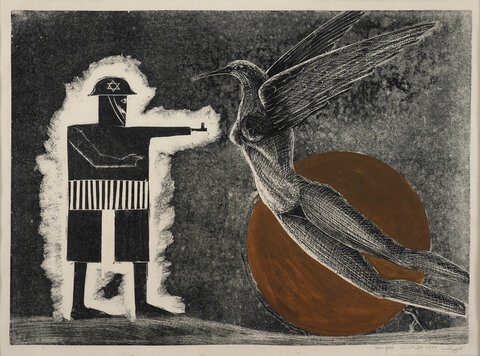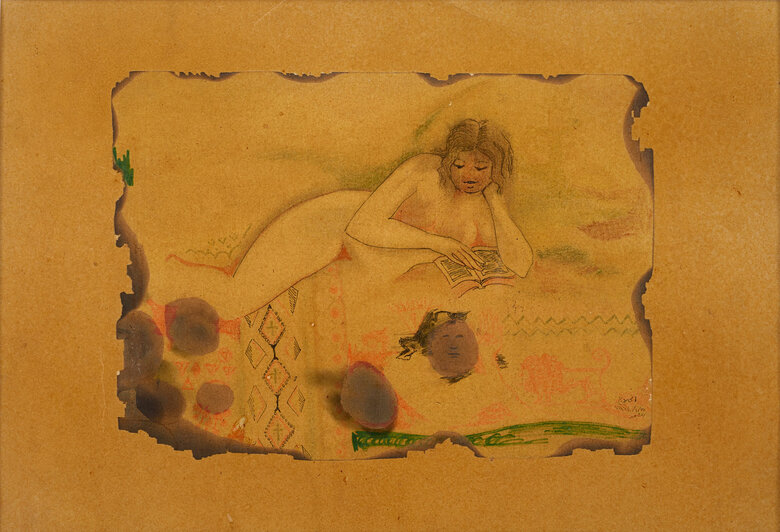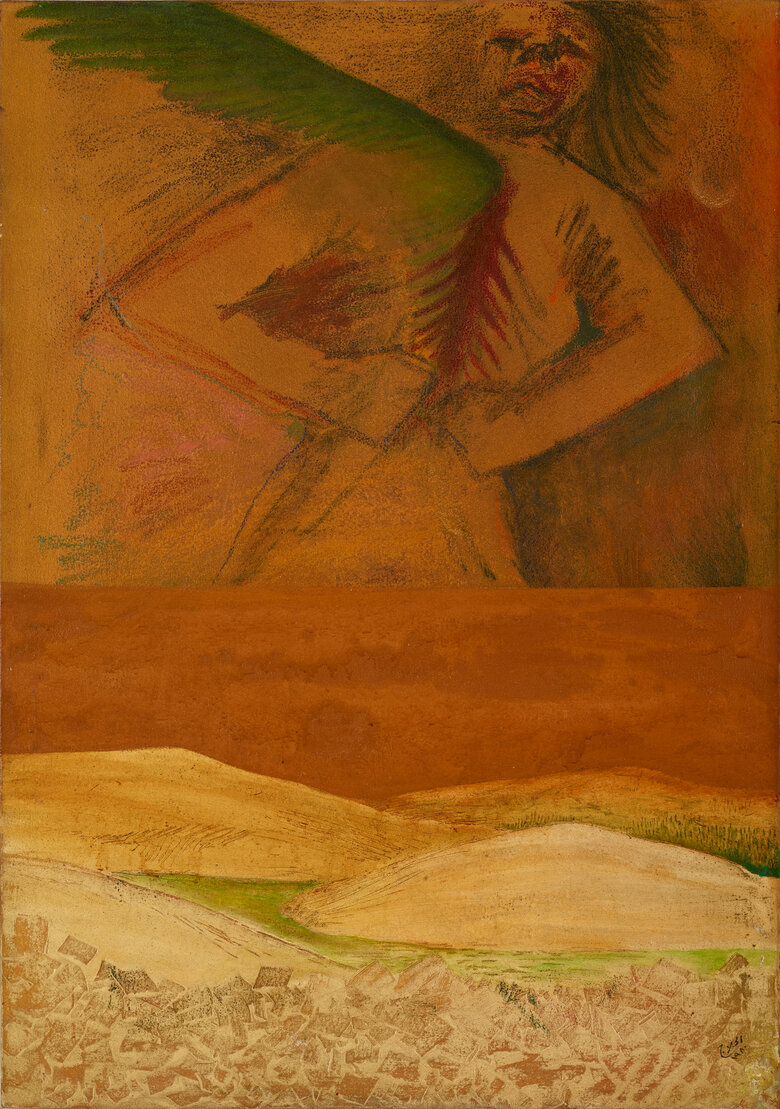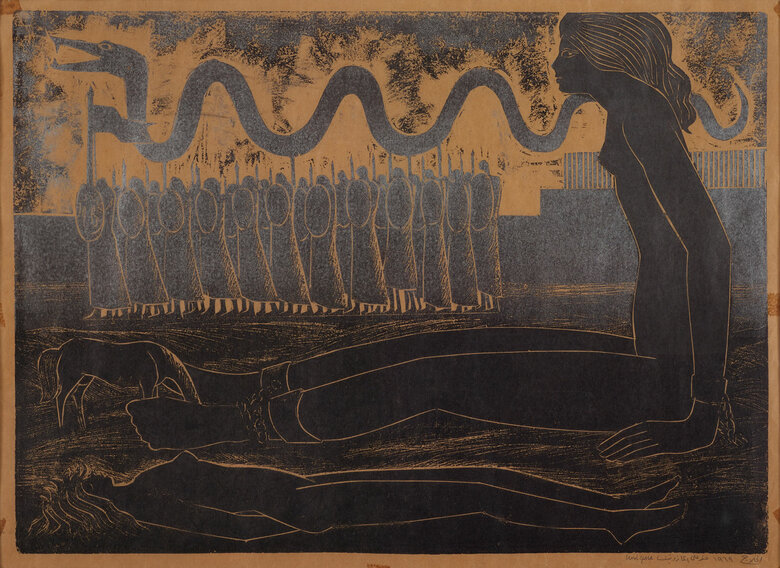Untitled, 2001, is a silkscreen print that explores themes of migration and urgency. El Hallaj used stencils to silkscreen print hundreds of bullheads, spanning almost two meters. Against a deep beige background, there are sporadic touches of faded lilac. Inked in silkscreen, El Hallaj depicts the torso of bulls in degradations of brown, seemingly stampeding from the bottom right corner towards the upper left corner of the canvas. In contrast, we see another herd of outlined bulls, with distinct eyes and protruding horns, moving from the bottom left corner of the canvas towards the upper right. The bulls seem to cross paths, obstructing each other's movement, evoking a sense of panicked and confused migration across the land. The bullhead's varying degrees of visible head, neck, and horns create a dynamic sense of motion as if the herd is in forced migration.
El Hallaj used small, multiple overlapping silkscreen prints on the comparatively large-scale canvas to achieve this complex composition, creating a layered effect of merging and superimposed bulls. Silkscreen printing, or screenprinting, involves using stencils to transfer ink through a mesh screen onto the canvas. The mesh screen is stretched across a wooden frame, and stencils are placed on it to block out areas where ink cannot pass. In this case, the stencil delineates the negative space of the bulls. Ink is then forced through the open mesh areas using a squeegee, transferring the image onto the canvas. This technique allowed him to silkscreen hundreds of bulls onto the linen canvas and overlap them. El Hallaj is best known for his woodcut prints; however, this unique print in silkscreen demonstrates his versatility and experimentation in various printmaking techniques, as well as the introduction of a new color varying from his signature black and white.
El Hallaj's work often draws on symbols from literature, history, and mythology. In ancient Egypt, the bull was revered as a divine figure associated with the God of agriculture and reproduction. In Mediterranean cultures, the bull symbolizes power, love, and fertility. Furthermore, the bull also references the Mesopotamian Epic of Gilgamesh (circa 2100 BC), written by the scribe Sîn-lēqi-unninn and preserved on clay tablets. The poem tells the story of Gilgamesh, who rejects a marriage proposal from Ishtar, the goddess of war and sex. In retaliation, Ishtar asks her father, An, to unleash the Bull of Heaven to wreak havoc upon Gilgamesh and the people of Uruk. In Untitled, 2001, El Hallaj draws upon several themes, such as war, vengeance, fertility, love, and power, that are very much associated with the Palestinian reality.
Signed and dated in Arabic on the lower right front

